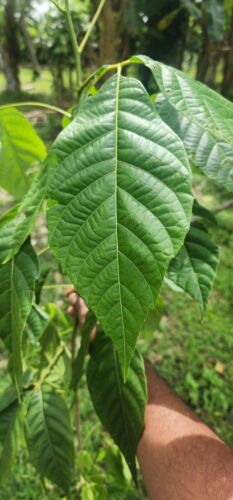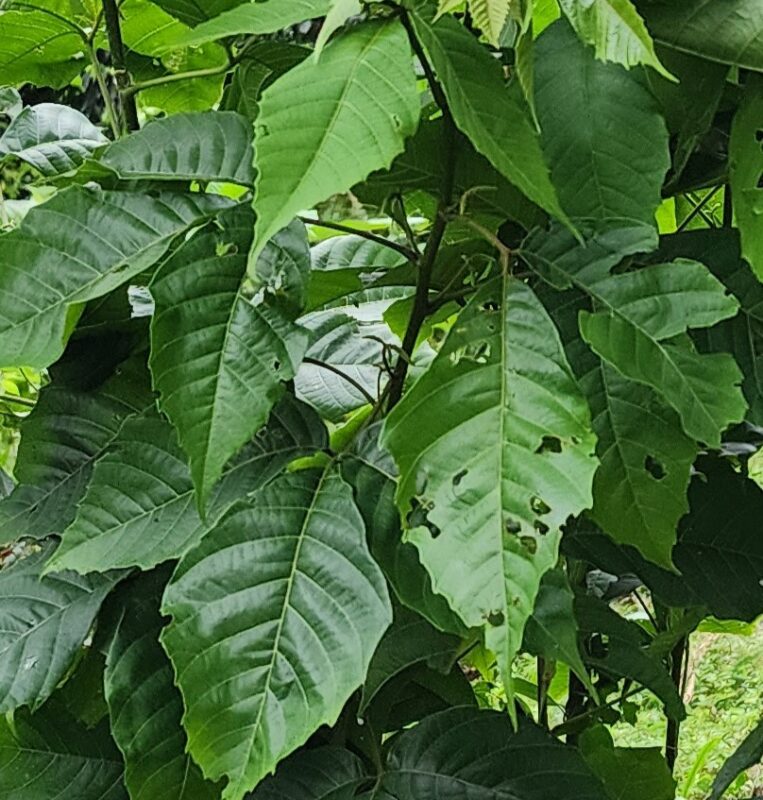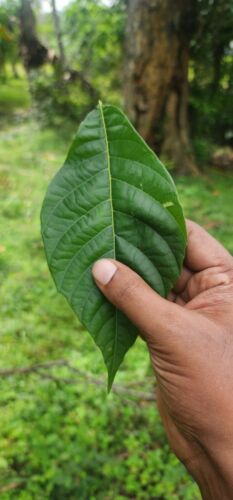Indian Allophylus Cobbe Benefits: Exploring the Traditional Uses of Sri Lanka’s Kobbe Plant for Fractures

Indian Allophylus Kobbe: The “Bone-Mending” Berry of the Forest – Unveiling the Power of Allophylus cobbe
Imagine a traditional healer, deep in a lush forest, called upon to mend a sprained ankle or support the healing of a broken bone. Their wisdom wouldn’t come from a modern clinic, but from the plants themselves. And in many such traditions, one particular shrub, known for its small, vibrant berries, stands out for its remarkable ability to aid in recovery from physical trauma.
This is Kobbe (Allophylus cobbe), a versatile plant celebrated across its native ranges in Asia and Africa. Scientifically known as Allophylus cobbe, it might also be known by more descriptive names like Tit Berry or even Tropical Ash in some regions. Here in Sri Lanka, our local name, Kobbe , perfectly captures its essence in our traditional medicine.
While it might not be a globally recognized “superfood,” Kobbe holds a cherished place in folk healing, particularly for its unique and potent properties related to musculoskeletal health. Let’s delve into the ancient wisdom and discover the incredible, often surprising, benefits of this powerful forest remedy.
A Tree of Many Names, A Legacy of Healing
The various names for Allophylus cobbe across different cultures hint at its widespread recognition and diverse applications:
- Scientific Name: Allophylus cobbe – The universal identifier, crucial for accurate research and communication.
- Sinhala (Sri Lanka): Kobbe (කොබ්බේ) – The most common and powerful local name, deeply embedded in our traditional medicine.
- Common English Names: Tit Berry, Wild Rambutan, Tropical Ash – Descriptive names, though less globally recognized for its medicinal uses.
- Other Asian Names: It has numerous regional names reflecting its presence across India, Southeast Asia, and parts of Africa.
The “Bone-Setter’s” Secret: Kobbe for Fractures and Injuries

One of the most striking and important traditional uses of Kobbe is its role in supporting the healing of bone fractures, sprains, and other musculoskeletal injuries. This reputation is deeply ingrained in folk medicine, earning it the title of a “bone-mending” herb.
While it’s crucial to understand that no herb can replace the physical alignment and immobilization required for severe fractures, Kobbe is traditionally used as an adjunct therapy to:
- Accelerate Bone Healing: Traditional healers prepare a paste from the fresh or dried leaves and bark of Kobbe. This paste is applied topically to the affected area, often with a bandage or splint. The compounds within the plant are believed to stimulate cellular activity, potentially encouraging faster calcification and bone regeneration.
- Reduce Pain and Swelling: Injuries, especially fractures and sprains, come with intense pain and inflammation. Allophylus cobbe is rich in bioactive compounds that possess significant anti-inflammatory and analgesic (pain-relieving) properties. When applied externally, it helps to soothe localized pain and dramatically reduce swelling around the injured site, bringing much-needed comfort.
- Combat Infection: Any open wound associated with an injury carries a risk of infection. Kobbe has traditional antimicrobial qualities, which can help protect the affected area from bacterial contamination, promoting cleaner healing.
This targeted application for physical trauma makes Kobbe a highly valued herb in regions where modern medical facilities might be scarce, relying on generations of handed-down knowledge.
Beyond Bones: A Holistic Healer
While its role in musculoskeletal health is paramount, the benefits of Kobbe extend far beyond. Its leaves, bark, and roots are utilized in various preparations for a wider range of health concerns.
1. A Potent Anti-inflammatory Powerhouse
The plant’s ability to quell inflammation isn’t limited to injuries. Internally, decoctions or teas made from Allophylus cobbe leaves are traditionally consumed to address systemic inflammation, which is at the root of many chronic conditions. This general anti-inflammatory action can benefit various parts of the body.
2. Supporting Digestive Wellness
In many traditional systems, Kobbe is considered a valuable digestive aid. Its leaves and bark are traditionally used to:
- Manage Diarrhea: The astringent properties of the plant help to tighten tissues and reduce fluid secretion, making it effective in controlling loose stools and dysentery.
- Soothe Stomach Discomfort: It can help alleviate abdominal pain, indigestion, and bloating, promoting a more harmonious digestive process.
3. Rich in Antioxidants for Cellular Protection
Research has begun to identify the presence of various phenolic compounds, flavonoids, and other phytochemicals in Allophylus cobbe. These are powerful antioxidants that combat oxidative stress in the body. Oxidative stress, caused by free radicals, is a major contributor to aging and various chronic diseases. Consuming Kobbe traditionally provides the body with these protective compounds.
4. Liver Support and Detoxification
Like many bitter and astringent herbs, Kobbe is traditionally used to support liver function. It’s believed to aid the liver in its vital detoxification processes, helping the body to eliminate waste and maintain overall systemic health. A healthy liver is crucial for metabolic balance and vitality.
Bringing Kobbe’s Wisdom into Practice

In traditional medicine, the leaves and bark of Kobbe are most commonly utilized as:
- Pastes/Poultices: For external application on fractures, sprains, and inflammatory skin conditions.
- Decoctions: Boiling the leaves or bark in water to create a medicinal tea for internal consumption, particularly for digestive issues and general inflammation.
- Infusions: Steeping the leaves in hot water for a milder tea.
Important Note: As with any potent traditional remedy, it is crucial to use Kobbe under the guidance of a qualified traditional healer or an experienced herbal practitioner. Never attempt to self-diagnose or self-treat serious conditions like fractures.
Kobbe: A Testament to Nature’s Pharmacy
The Kobbe plant, or Allophylus cobbe, stands as a testament to the incredible healing potential hidden within our natural world. From its remarkable ability to support bone healing and soothe pain to its benefits for digestion and inflammation, it is a plant deeply rooted in the wisdom of traditional medicine. It reminds us that often, the most powerful remedies are found not in distant, exotic lands, but in the familiar flora that has surrounded communities for millennia.
Disclaimer: This article is for informational and educational purposes only and does not constitute medical advice. The information provided is based on traditional uses and available scientific literature but is not a substitute for professional medical consultation, diagnosis, or treatment. Always consult with a qualified healthcare provider before using any herbal product, especially for serious conditions like fractures, or if you are pregnant, nursing, or taking other medications.

Indian Allophylus seeds
Indian Allophylus wikipedia
Indian Allophylus medicinal uses
Indian Allophylus plant
Indian Allophylus leaf powder
Indian Allophylus leaves
Indian Allophylus for fracture healing
Discover more from Nath Mart
Subscribe to get the latest posts sent to your email.
